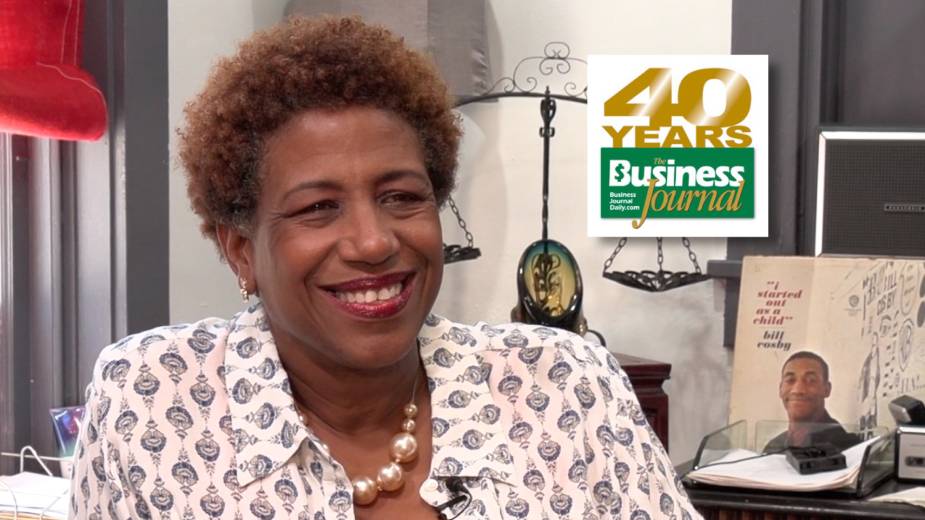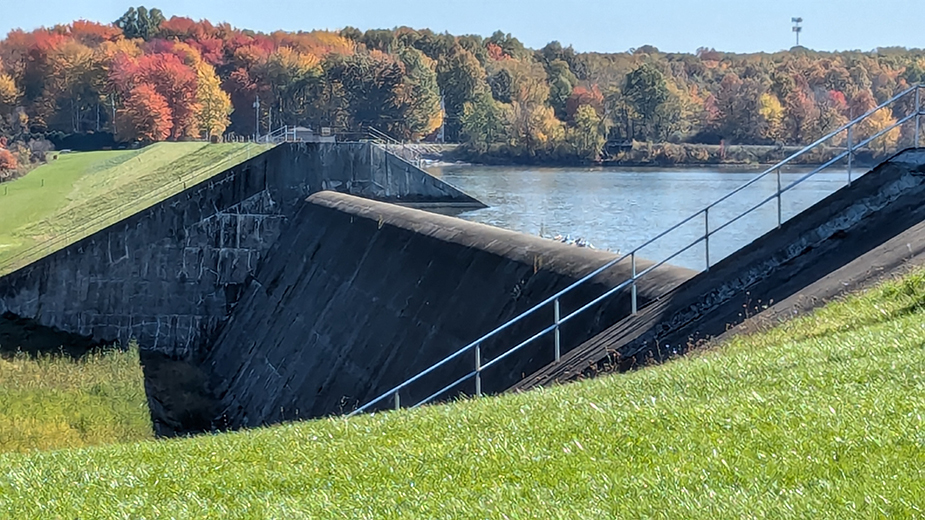Embracing an Emerging Technology Culture
YOUNGSTOWN, Ohio – There was little evidence in the Mahoning Valley of an advanced manufacturing and technology sector 40 years ago.
At that time, much of the research and development relative to production and materials was traditionally relegated to the large steel companies, which held this work close to their vests because of competitive interests. This lack of reinvestment and modernization ultimately cost the industry dearly. By the mid-1980s, the major steel manufacturers had closed their doors, taking their intellectual property with them.
As the region struggled, few would have imagined that four decades later the Mahoning Valley would be recognized worldwide as a technology hub for both advanced manufacturing and energy.
While the collapse of the steel industry proved devastating, it created opportunity for innovation and scientific discovery that is just now beginning to matriculate.
In short, an entirely new culture – one that fosters collaboration, creativity and an entrepreneurial drive – has evolved over the last 15 years.
Central to this transformation was a combination of private, public and academic resources that enabled the Valley to expand its tech footprint – beginning with the Youngstown Business Incubator in downtown Youngstown (See story page 22).
That was followed in 2010 by the incorporation of the nonprofit Brite Energy Innovators, a business incubator in downtown Warren that is devoted to advancing high-tech and alternative energy development.
Then in 2012 came the announcement that Youngstown would be the site of a new advanced manufacturing pilot program sponsored by President Barack Obama’s administration, today known as America Makes.
Shaping a New Narrative
We were all so traumatized by what happened over the last 30 years,” recalls former U.S. Rep. Tim Ryan, referencing the steel shutdowns of the 1970s and 1980s. Ryan represented the Mahoning Valley as a Democrat in Congress from 2003 and 2023 and is today the chief global business development officer for Zoetic, a company that specializes in developing energy, water and food technologies.
The former congressman says it was one of his objectives to help reshape the narrative of the region – to leverage its powerful manufacturing legacy in encouraging adoption of new methods of production and technology. At the forefront were business leaders who saw the value of positioning the Valley for the future, he says.
“A lot of this was about diversity, too,” Ryan says. “We didn’t want to get caught in the predicament where we were all in on steel.”
Ryan recalls a pivotal moment in 2007, when he and former congressman Jason Altmire – whose district included nearby Lawrence County, portions of Mercer County and some Pittsburgh suburbs – convened the first Tech Belt Summit at Youngstown State University. The event attracted more than 100 business, academic and community leaders. The idea was to shed the region’s “Rust Belt” stigma in favor of a more modern, sophisticated hub that could directly compete with Shanghai and Mumbai.
“I think it got everybody thinking about the partnerships we had that could put us in a position to leverage something such as America Makes,” Ryan says.
America Makes was the first advanced manufacturing hub in the nation and today is part of Manufacturing USA – a network of 12 regional institutes focused on furthering U.S. competitiveness through the development and use of new processes, materials and technology in manufacturing.
“We developed regional partnerships that beat out institutions like MIT. Everybody was going after this thing,” Ryan says. “We were able to do it because we pooled from Cleveland, Pittsburgh and Youngstown,” he says. “We made a great case. We had a sophisticated group of people and one hell of a product.”
America Makes
America Makes – formerly known as the National Additive Manufacturing Innovation Institute – serves as a conduit for private-public projects that tally in the tens of millions of dollars. Many of these projects are critical to U.S. security interests, since many are associated with the U.S. Department of Defense.
The organization’s objective is to facilitate the adoption of additive manufacturing technology – a process that converts a digitally engineered design into a physical component through 3D printing.
Over the years, technology has improved to where 3D printers are capable of producing a wide range of products – both small and very large – from different materials.
Since it was established in 2012, America Makes has attracted 294 members, ranging from defense and aerospace industry titans such as Boeing, Lockheed Martin and Raytheon, to smaller local companies with capabilities that could fit with major projects. To date, America Makes has helped to coordinate $450 million in private and public funding for research, training and development projects.
The projects are used to integrate additive manufacturing research into public and private sectors that could be used for military applications, civilian aerospace and space exploration.
“The community is very much behind what we’re trying to do,” says John Wilczynski, executive director of America Makes. “We’ve got great companies in the area that are strong supporters of us and are well-represented nationally.”
Each year, America Makes hosts its Members Meeting & Exchange event, a two-day conference in Youngstown that brings together the country’s top researchers, scientists, academics and executives related to additive manufacturing.
“We usually have between 300 and 400 people, a lot of people from outside of the area,” Wilczynski says. “We refer to it as the annual pilgrimage to Youngstown. Everyone knows where Youngstown is because this institute exists.”
These conferences also present opportunities for local companies to network with some of the major defense contractors and academic institutions, Wilczynski says. And it presents an opportunity to showcase the Mahoning Valley for potential long-term business attraction, he adds.
America Makes has helped facilitate projects with Youngstown State University, Humtown Products, and other regional businesses, he says.
Creating the Culture
Among the local companies that have partnered with America Makes and other institutions is JuggerBot 3D, which manufactures commercial 3D printers from its offices at YBI’s Tech Block Building 5.
Last year, JuggerBot was awarded a $4 million grant to work on a hybrid 3D printer with the capabilities of producing parts with two separate materials.
The project, in alliance with Air Force Research Labs, aims to drive technologies that will radically lower the cost of manufacturing, produce lighter-weight vehicles, and scale manufacturing to a relevant speed, says Zachary DiVencenzo, president.
“We started 10 years ago, just as America Makes and 3D printing took hold here,” he says. He and business partner Dan Fernback were preparing to graduate with engineering degrees from Youngstown State University.
While still in college, DiVencenzo was intrigued at the potential of 3D printing and its future impact. However, instead of starting a business that uses the technology to make products or components, the company saw value in building its own 3D printers to sell on the market.
DiVencenzo says initially, the company manufactured smaller, desktop-size 3D printers, welding the components together in his grandfather’s shop. It was then the company was introduced to Colleen Kelly, now executive vice president of the Youngstown Business Incubator.
“We were like, ‘What is an incubator?’” he says. DiVencenzo and Fernback worked with the YBI’s staff, including then-CEO Jim Cossler, who helped to guide the business through its early stages of development. “At every stage of our growth, they were 100% supportive,” he says.
During the first several years, the business partners worked their full-time jobs and tended to JuggerBot 3D in the evenings at its small office at YBI. “We just put money back into the company and evolved organically,” he says. As the YBI expanded, so did the prospects for JuggerBot, and the company experimented with new materials and larger printers.
The biggest challenge facing the company, DiVencenzo recalls, was that customers were unsure of JuggerBot’s staying power and whether it would remain in business long enough to provide service and maintenance to the devices.
Still, some companies took the chance. Taylor Winfield Technologies, for example, purchased one of JuggerBot’s early printers, he says.
The real breakthrough came in 2017, when the YBI expanded into Tech Block Building 5, the former Vindicator building, DiVencenzo says. The first tenants in that space were JuggerBot and Strangpresse, a company formed by businessman Charles George.
Strangpresse had developed a 3D printer extruder that could distribute material from pellet form. “It jump-started us, and we built our first two pellet-fed printers,” DiVencenzo says.
JuggerBot soon secured other customers, and business became solid enough for the pair to quit their jobs. The latest project with the Air Force Research Lab has engendered further expansion and the company today employs 17.
“We were excited to hire our first Ph.D’s,” DiVencenzo says. “We started outfitting our team with the right individuals for this project. It allowed us to diversify the team into technology development and product development.”
In July, the trade journal All 3DP named JuggerBot among the top 20 manufacturers of 3D printers in the United States.
The Brite Side
As these advances took hold in Mahoning County, efforts were underway to establish a second incubator in Trumbull County to encourage development of new technology related to energy.
Brite Energy Innovators, based in downtown Warren, boasts 125 portfolio companies it assists throughout Ohio, five of which operate from its East Market Street location, says Rick Stockburger, Brite president and CEO.
Brite was established as a nonprofit incubator in 2010.
“When I think about energy, every country in the world that you consider wealthy, a huge part of their economy is based on energy and manufacturing,” Stockburger says.
Establishing a hub where young companies could conduct research and product development, and bring these products into the commercial space was critical, he says. Today, Brite is regarded among the top energy incubators in the country and is the single such institution in Ohio.
Stockburger credits Brite for helping Ultium Cells – the joint venture between LG Energy Solution and General Motors – ramp up production at its new Lordstown plant.
“They’re one of the largest employers in the Mahoning Valley today,” he says. The plant, commissioned two years ago, manufactures electric vehicle battery cells that are used in GM’s new EV lineup.
Other Brite portfolio companies have proven resilient, he says.
Cleveland-based Land Moto, for example, is manufacturing EV motorcycles with an innovative battery that is rechargeable and portable. The battery can be removed from the bike and used to power other devices in the home or elsewhere. “The main component is actually the battery,” Stockburger says.
Adena Power, he notes, has devised a sodium-based battery cell that delivers clean, safe energy. Moreover, the technology uses noncritical materials and is not dependent on rare earth minerals that are mined in foreign countries. Recently, the company was awarded a U.S. Army grant to assess how this technology could power military microgrids.
Stockburger also points to Intwine Connect, another company that has developed technology related to cold storage that is doing business with the restaurant and food industry.
“Between 10 and 15 of our startups have emerged as stand-alone companies,” Stockburger says. “We’re happy with our progress. The companies we support are putting hundreds of millions of dollars into the state’s economy every year.”
Stockburger says innovations in the future would most likely include artificial intelligence and how this technology could interface with electric grids, determining weaknesses before a catastrophic power failure occurs.
“It’s giving us another set of hands and eyes – data from which we can make decisions,” he adds.
Brite’s presence in the Mahoning Valley solidifies the region as an emerging center for innovation.
“We’re taking the lead in building technologies needed for the new economy, Stockburger says. “That’s why I think the Mahoning Valley could be a place that can create wealth and good paying jobs for everybody.”
Pictured at top: Zachary DiVencenzo stands beside one of JuggerBot’s commercial 3D printers.
Copyright 2024 The Business Journal, Youngstown, Ohio.



